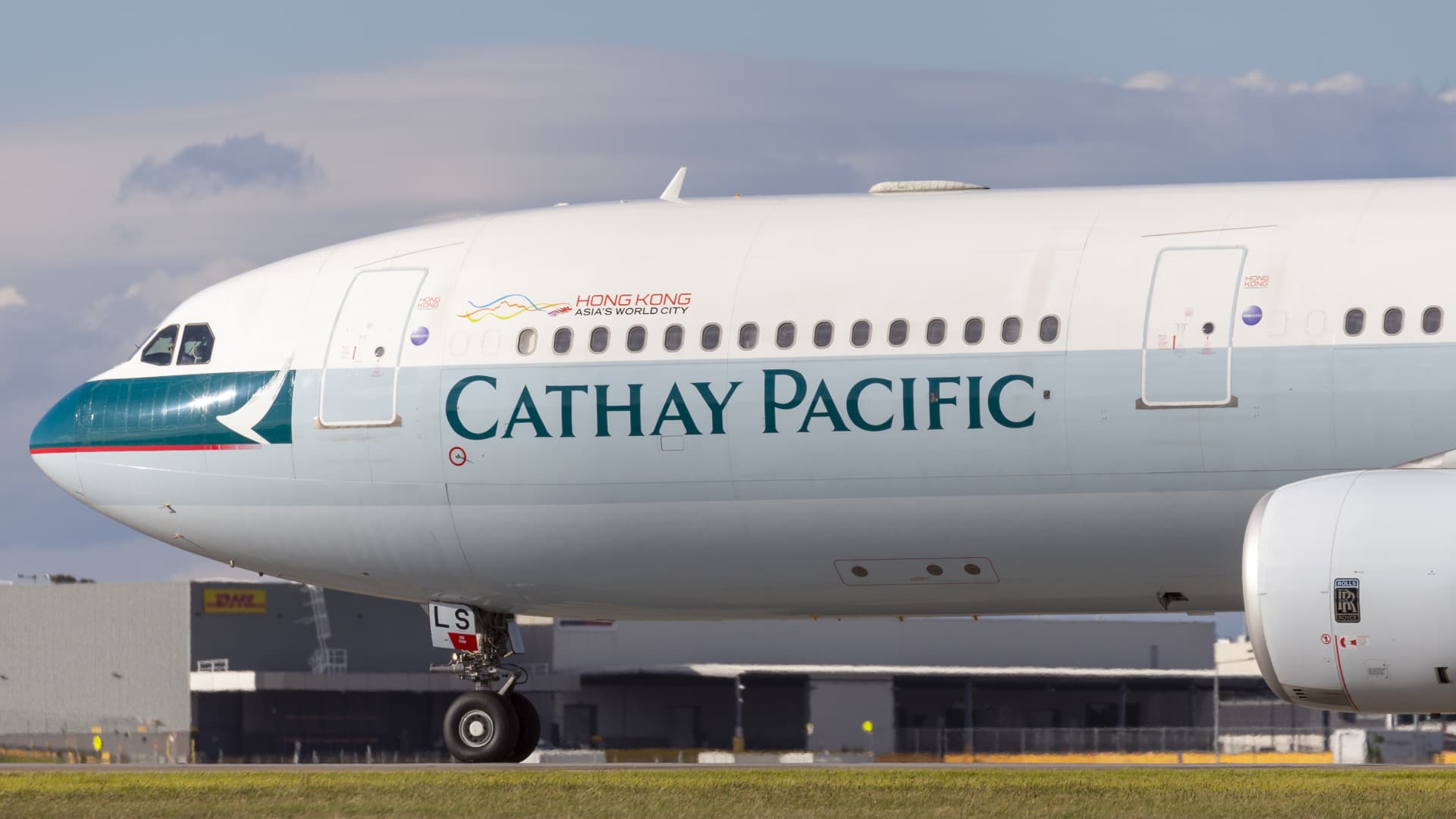
Cathay Pacific Airways aircraft preparing for takeoff from Melbourne International Airport.
Ryan Fletcher | iStock Editorial | Getty Images
Cathay Pacific Airways is ready to rebuild the airline and Hong Kong’s hub status as it emerges from the pandemic, the carrier’s chief executive said on Wednesday after it reported a 2022 loss at the low end of forecasts.
Cathay shares rose as much as 1.4% to 7.95 Hong Kong dollars after the results were released, reversing morning losses and beating a 2.4% drop in the broader market as investors bet on a turnaround following heavy losses during the pandemic.
“We were very encouraged to see a bright light at the end of the tunnel in the second half of 2022, and the positive momentum has continued into 2023,” Chief Executive Officer Ronald Lam said in a statement.
“After three brutal years of the Covid-19 pandemic, we have finally entered into a new exciting phase, in which we will rebuild Cathay Pacific for Hong Kong.”
The airline reported an annual loss of HK$6.55 billion ($834.4 million) for the 12 months ended Dec. 31, wider than the previous year’s loss but near the bottom of its January forecast for a loss of between HK$6.4 billion and HK$7 billion.

Analysts had expected an average annual loss of HK$4.4 billion, according to Refinitiv data. They forecast a HK$3.9 billion profit for this year now that Hong Kong and mainland China have ended border restrictions.
Cathay had parked much of its fleet in the desert during the pandemic due a lack of demand and its recovery has lagged behind traditional rival Singapore Airlines, which faced less strict rules last year.
The airline was badly hit by Covid-related flight cancellations, border closures and strict quarantine measures for crew, resulting in drastic headcount reductions.
Cathay said it was operating about one-third of pre-pandemic passenger flight capacity by December and ended the year operating passenger flights to 58 destinations, double the 29 destinations the airline flew to in January 2022.
It would operate at about 70% of its prepandemic passenger flight capacity by the end of 2023, with an aim to return to pre-pandemic levels by the end of 2024. It was operating about two-thirds of pre-pandemic cargo flight capacity levels by the end of 2022.
